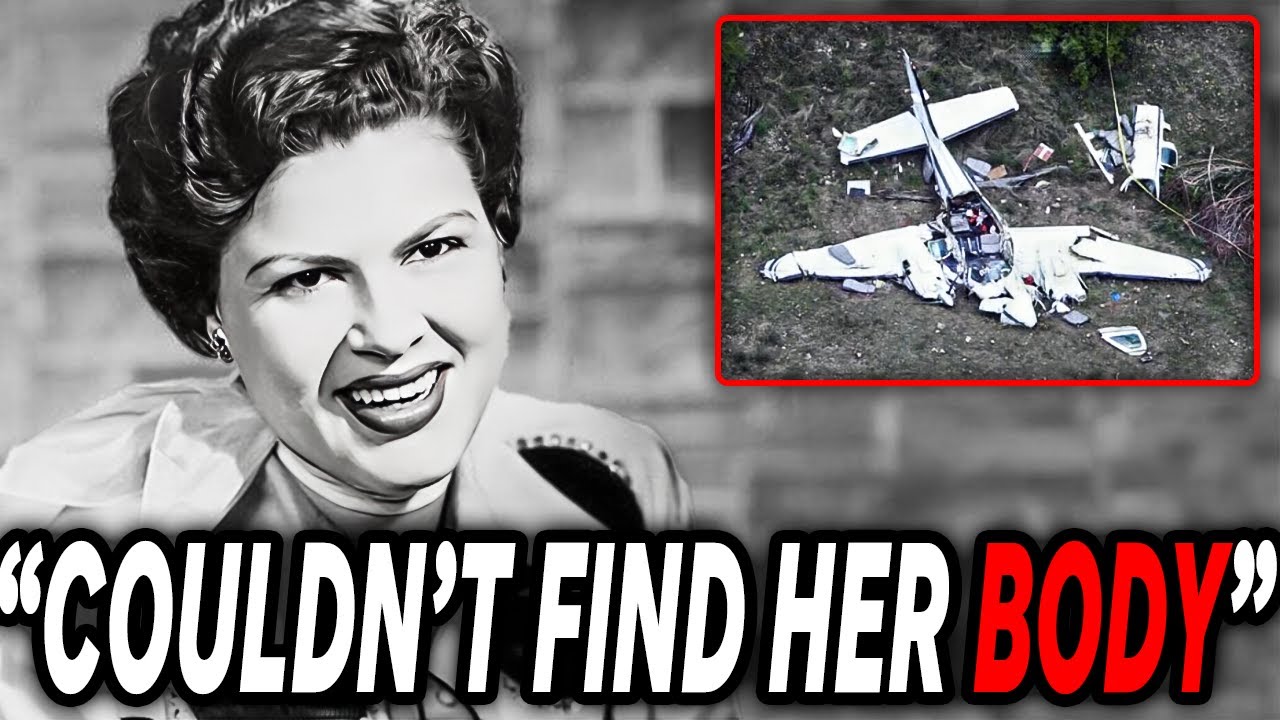
On March 5, 1963, the world of country music was shaken to its core. Beloved singer Patsy Cline, alongside fellow Grand Ole Opry stars Cowboy Copas and Hawkshaw Hawkins, and pilot Randy Hughes, perished in a tragic plane crash near Camden, Tennessee. This catastrophic event sent shockwaves through the music community and left an unhealed wound in the hearts of fans and contemporaries alike.
For over six decades, the mystery surrounding that flight has haunted fans, historians, and aviation experts alike. Revisiting the events of that fateful day and Cline’s remarkable journey brings chilling new perspectives that shine light on her legacy, the circumstances around the crash, and the haunting questions that remain unanswered.
Born Virginia Patterson Hensley in 1932, in Winchester, Virginia, Patsy Cline rose from poverty to stardom through sheer determination and raw talent. By age 21, she had captured the music world’s attention, signing her first recording contract and stunning audiences with her breakthrough performance of “Walkin’ After Midnight” on Arthur Godfrey’s Talent Scouts in 1957. Hits like “I Fall to Pieces,” “Crazy,” and “She’s Got You” cemented her reputation as a pioneer, fusing country, blues, and pop in a way that reshaped the genre and opened doors for women in a male-dominated industry. Her influence was so profound that in 1973, she became the first female solo artist inducted into the Country Music Hall of Fame—a posthumous honor that underscored her groundbreaking impact.
The final flight remains shrouded in tragic detail. Early in 1963, fresh from a successful benefit concert in Kansas City, Cline boarded a Piper PA-24 Comanche with her manager and fellow musicians, eager to return to Nashville. That day’s weather was perilous—fog, rain, and high winds grounded many flights. Despite warnings, Hughes, the pilot and Cline’s close friend, who had limited experience with instrument-only flying, pushed forward with the journey.
After a brief refueling in Dyersburg, the plane continued until it crashed nose-first into a wooded area near Camden at approximately 6:20 p.m. The crash instantly claimed all four lives. The nation plunged into mourning. Fans gathered outside Cline’s Nashville home while radio stations played her songs on repeat. Impromptu memorials sprang up all over the country. Legendary artists like Loretta Lynn, Dolly Parton, and Willie Nelson publicly grieved, with Lynn calling Cline her “sister in spirit” and Nelson crediting her talent for transforming “Crazy” into an anthem beyond imagination.
Her husband, Charlie Dick, was left behind to raise their children and preserve Patsy’s legacy. At her funeral in Winchester, thousands attended, and a poignant inscription was placed on her grave: “Death cannot kill what never dies — Love.”
Yet, chilling questions linger to this day. Why did Hughes fly despite severe weather warnings? Why take a risky detour that led the plane into the storm’s path? Odd anecdotes add layers of intrigue—rumors that George Jones almost joined the flight but was removed after eating Cline’s backstage fried chicken, stories often brushed off as folklore but fueling the mythology of that last day.
The tragedy sparked urgent concerns about musician travel safety. Small private planes were commonplace but underestimated for risks. Following Cline’s death, stricter safety protocols were gradually adopted, reshaping the industry’s approach to artist travel.
Six decades later, Patsy Cline’s voice remains a defining force in country music. Her timeless hits inspire new generations, echoing in the works of artists from Loretta Lynn to Kacey Musgraves. Memorials like the crash site marker and the bell tower in Winchester that plays hymns at the time of her death each evening stand as eternal tributes.
Though her life was cut tragically short, Cline’s music continues to tell a story of triumph and heartbreak—a stark reminder of life’s fragility and the undying power of song.
